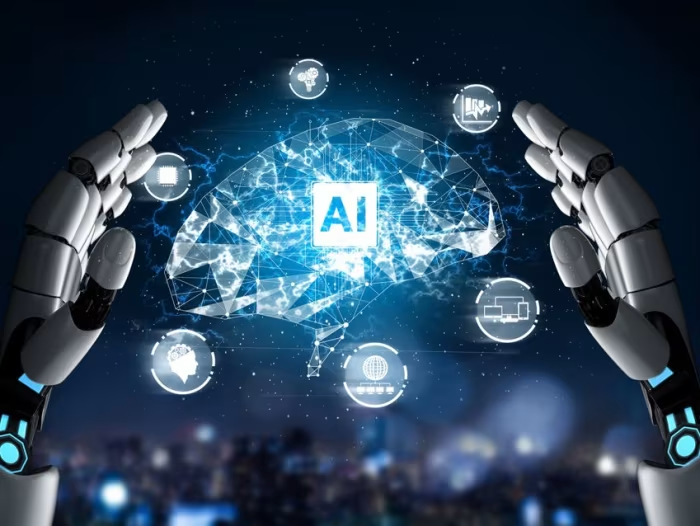Resource / Online Journal
Generative AI vs Agentic AI: Know the Emerging Automation
Agentic AI is one of the fastest-growing sides of cybersecurity. It can ease your organization's cybersecurity from growing complex cyber threats.
Published on Jul 1, 2025

What is Artificial Intelligence (AI) in Cybersecurity?
Artificial intelligence is rapidly reshaping. In cybersecurity, it is changing how organizations defend against cyber threats. It is changing rule-based algorithms to advanced neural networks. Artificial intelligence models have become indispensable.
It is now helping us by managing vast data flows, automating repetitive tasks, and detecting anomalies. Machine learning and generative AI models are already helping security teams improve productivity. It is helping with identifying suspicious behaviors and streamlining analysis.
With growing changes and threats comes the need for more proactive methods. Here comes the role of Agentic AI. Unlike traditional AI that reacts to input, agentic systems take initiative, act autonomously, and continuously learn. For cybersecurity professionals under pressure, this could be the next game-changer.
What Is Generative AI in Cybersecurity?
Generative AI systems refer to a model that can create new content, text, code, images, or reports based on the data they’re trained on. In cybersecurity, it is used to generate risk summaries or draft incident reports. It helps us to simulate phishing emails, support customer service chatbots, etc.
It is usually based on natural language processing. Generative artificial intelligence usually relies on prompts and requires oversight to ensure quality and relevance.
It excels at assisting human analysts by automating content generation. For instance, it can summarize threat logs, suggest remediation steps, or explain alerts in plain language. However, it does not act independently.
What Is Agentic AI and Is It Different?
Yes, Agentic AI is different as it takes autonomy to the next level. It refers to AI systems, which are powered by intelligent agents. It can even make decisions and take actions without repetitive, continuous human input.
These systems go beyond normal machine learning models or producing content. It helps to interpret data, make proactive choices, and execute tasks based on customizable goals. In cybersecurity, it helps in real-time threat detection, automatic containment of breaches, adaptive risk prioritization, and even autonomous patching.
AI security agents continuously monitor environments, respond to novel threats, and adjust strategies based on feedback and training data. This dynamic, goal-directed behavior makes agentic AI a potential game-changer for often overburdened security teams.
Generative AI vs Agentic AI Applications in Cybersecurity
Here’s a short, straight, and clear breakdown:
- Generative AI is supportive. It drafts reports, generates alerts, and enhances awareness.
- Agentic AI is proactive. It investigates threats, blocks attacks, and takes corrective action.
For example, a scenario in which a suspicious phishing email comes through. Many Generative AI models just flag the email. It does not analyze complex data or leave it for the security to go through this vast amount of data for any further actions.
However, Agentic AI not only identifies it but also isolates the affected inbox and alerts the SOC. For teams drowning in alerts, this difference can mean the ability to respond instantly rather than manually triage.
How AI Agents Work in Cybersecurity
AI powered agents are at the core of agentic AI. These autonomous software components sense, reason, and act as a proactive cybersecurity tool. In cybersecurity, AI agents collect data across systems, assess threats, determine risk levels, and respond accordingly, without waiting for human commands.
These agents can provide many features. For example:
- Investigate anomalies in real time
- Automate firewall updates
- Isolate endpoints during suspected breaches
- Provide context-aware insights
With fewer false positives and faster threat resolution, AI agents reduce the manual load on SOC teams. It can easily boost operational efficiency. Thus, increasing the employee productivity.
Where AI models Fits in Business Processes and their Security Operations
Both generative and agentic AI have complementary roles in modern security operations.
Generative AI: It supports tasks like summarizing threat intelligence, creating compliance documentation, and writing response templates. It's commonly integrated into SIEM platforms to help human analysts process data faster.
Agentic AI, on the other hand, integrates into SOAR systems to enable autonomous decision-making, remediation, and containment. Together, these technologies can automate both the thinking and the doing in cybersecurity, accelerating the detection-to-response cycle in the SOC.
Challenges of Agentic AI Systems in Cybersecurity
Despite its potential, agentic AI isn't without risk. There are some concerns and red flags as well, for example:
- Bias and explainability: Agentic decisions may be hard to interpret or audit.
- Ethical implications: Automation could displace certain roles or reduce human oversight.
- Security of the AI itself: If compromised, autonomous systems could introduce new vulnerabilities.
That’s why responsible implementation from model training to real-time monitoring is critical. Trustworthy AI must be built on transparency, accountability, and continuous evaluation. The service provider of your organization should also be very carefully selected.
Conclusion
Generative AI helps security teams work smarter in many ways, but Agentic AI helps them act faster. Both are essential to building resilient, responsive, and future-ready security operations. Watch our exclusive webinar on Agentic AI to dive deep. Register and Watch Now!
As cybersecurity threat surfaces grow in scale and complexity, the fusion of both models offers a balanced approach: one that combines creativity with autonomous defense.
Ready to elevate your cybersecurity strategy? Explore how you can streamline your security workflows, mitigate risks, and empower your SOC faster than ever before. Contact Us Now!
Recommended articles


How Agentic AI is Shaping the Future of Smart Decision-Making
Take Your Identity Strategy
to the Next Level
Strengthen your organization's digital identity for a secure and worry-free tomorrow. Kickstart the journey with a complimentary consultation to explore personalized solutions.